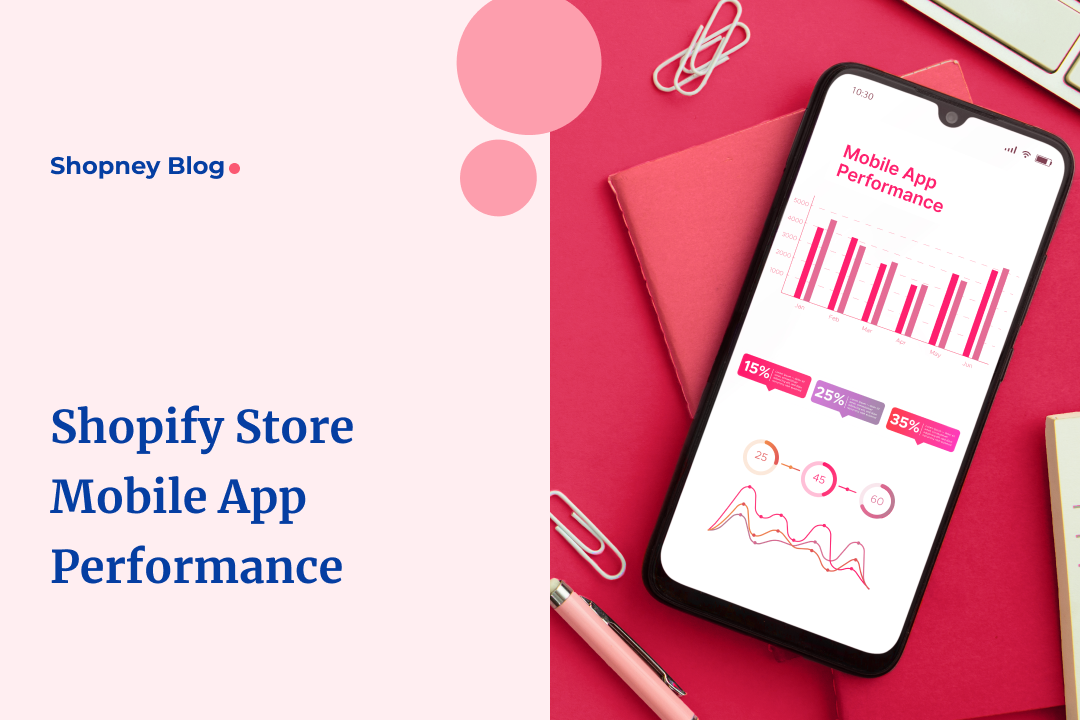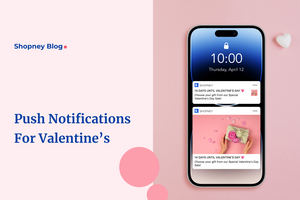
With mere seconds to capture the user’s attention, a sluggish, slow app is undoubtedly a brand’s worst nightmare today.
First impressions matter.
Users have high expectations and a rapidly decreasing level of patience. Your app needs to perform seamlessly to survive, thrive, and stand against the sheer competition.
Mobile app performance wasn't always the hot topic it is today. Back in the day, simply having an app was an achievement.
Anything to escape the frustrating experience of non-responsive mobile websites.
If there was any lag, you could always blame it on the internet service provider. But the era of pixelated graphics is over.
The speed at which technology has risen, apps have taken over. And today, users want lightning-fast responses and seamless interactions.
Otherwise, it takes them only a few taps to uninstall your app and never give your brand a chance again.
But how do you get started, and with what part of the app?
Its design? Or its speed? What’s most critical in both?
In this post, we will deep-dive and understand the most rewarding factors of mobile app performance that you should implement quickly.
This guide is primed so that your developers and product teams can optimize your app to deliver exceptional user performance and supercharge your conversions.
Let’s begin!
What is mobile app performance?
Mobile app performance refers to a broad range of factors that influence how well your app functions on a user's device.
Imagine this: you open your favorite brand’s app, suddenly caught with a desire to shop for an outfit for the party you find you have to attend on short notice
But... the images take ages to load, taps register with a delay, and the app crashes.
Frustrated, right? That is what a bad mobile app performance looks like.
Mobile app performance goes beyond simply how fast pages load but also includes aspects like load times, responsiveness, stability, and more- all of which we will address later on in the article.
Any issues in your app’s speed and performance will lead to user dissatisfaction, negative reviews, and, ultimately, a decline in user retention and success of the app.
The importance of mobile app performance
Users expect quick, responsive interactions with apps. More of that and deeper will their relationship with your brand be.
A poor mobile app performance rating, and they’ll be tapping away into your competitor's store in seconds.
Let’s take a look at exactly why prioritizing it can make or break your app's success:
1. Enhances user experience
When app users can navigate your app seamlessly and enjoy a frictionless experience, it keeps them engaged and coming back for more.
Happy users are loyal and are key to increasing sales and brand advocacy because they trust your brand.
2. Increases speed
Did you know that a one-second delay in page load time can lead to a 7% conversion rate drop?
Ouch!
And that’s not it- slow apps also drain battery life faster ruthlessly, encouraging users to try out another brand to save their power.
3. Improves brand perception
With more than 1.96 million apps available in the App Store and a whopping 2.87 million apps on Google Play Store for download, it’s clear it’s become a crowded battleground.
When users browse, they make split-second decisions based on the app rating and reviews, most of which tend to be about the app's loading speed.
App performance plays a critical role in your download rates.
4. Contributes to app store SEO
Google Play and the App Store both use various factors to rank apps, and performance is a key factor.
Faster apps get more visibility and organic downloads compared to slower ones that rarely get pushed to their user base and have to rely solely on paid advertising.
5. Enhances accessibility
Slow loading times and poor responsiveness disproportionately impact users with disabilities who rely on assistive mobile features.
Optimizing your app's performance isn't just about speed.
It’s ensuring accessibility for everyone and opening your app to a wider audience.
Optimizing mobile app performance: A quick checklist
Here are a few things we recommend working on to ensure optimal mobile app performance:
1. Work on initial load performance
A lot rests on the first interaction users have with your app, which is usually launching your app.
When it's quick and smooth, it will significantly reduce the chances of a frustrated uninstall.
An interesting insight - displaying spinning wheels and progress bars can lead to a poor experience for the user as it reinforces your app is loading slowly.
Use sparingly, only when necessary.
But to do this, you have to show users they are valued and ensure your app doesn’t lag in this crucial moment.
Here are a few action items to remember to achieve this:
- Minimize Initial Resource Loading: Check your app's startup sequence. Are there any resources that can be loaded lazily or only after the main interface becomes responsive?
- Keep Activities in Memory: Wherever possible, keep back certain activities in memory during startup to speed up your app launch.
- Remove Unnecessary Libraries: Check your app and remove any libraries or SDKs that are not essential to your app's core functionality.
- Streamline Code: Review and organize your app's code to remove any unnecessary or repetitive parts that could be making your app take longer to start up.
- Load Heavy Processes in the Background: Find any app tasks that need a lot of resources or take a long time to finish. Set them up to run separately from the app's main operation.
- Utilize Multi-threading: Wherever possible, use multi-threading to perform resource-intensive tasks without blocking the user interface.
- Compress Images and Media: Reduce the file size of images and media content that a user will likely see immediately after your app has launched, without negatively impacting overall quality.
- Lazy Load Images: You should, in addition to the above, load them as needed rather than all at once during startup.
- Review App Features: Check if a feature is necessary and simplify your app by removing non-essential features that increase load times.
- Optimize Initial Screen: Simplify your app’s initial screens and reduce the complexity and number of UI elements that need to be rendered during launch.
- Cache Essential Data: Store that data locally, allowing your app to launch and work even in offline mode or when the network connection is poor. Where possible, prefetch data that is likely to be needed right after startup and cache it for quick access.
2. Invest in advanced tech optimization
Right after working on your app’s initial load times, study user interaction and your app's architecture.
Is the code efficient in handling data, and is its resources managed well, even during poor network conditions?
When they are, it will help create smooth, responsive experiences.
Here’s a checklist of action items to help achieve this:
- Refactor and Streamline Code: Regularly check your code to increase its efficiency, simplicity, readability, and maintainability.
- Implement Object Pooling: Recycle or pool frequently used elements to reduce waste and make the app run more smoothly. When certain elements are kept ready to be reused for new processes instead of making new ones from scratch each time, your app manages resources more efficiently, optimizing mobile app performance.
- Compress Data Transfers: Reduce the size of data being sent and received by your app to make elements load faster. By making the data smaller, your app can display content and complete tasks faster, improving user experience.
- Optimize Data Serialization: Choose formats that allow data to move faster between your app and the internet, helping your app load faster.
- Reduce Network Requests: Cut down on how often your app needs to ask for information over the Internet. Batch them or use more comprehensive endpoints that can return multiple pieces of data in a single call.
- Optimize API Calls: Ensure API calls are efficient, retrieving only the data that is needed. Set up filters on the server that sends the data.
- Distribute with Content Delivery Networks (CDNs): Host static content and media files, and reduce latency by serving data from locations closer to the user.
- Optimize Rendering Paths: Reduce layout thrashing and reflows, especially for complex UIs. Look into how your app draws its screens and organize this process better to reduce delays and visual glitches.
- Monitor Memory Usage: Keep an eye on how much memory your app uses by using special monitoring tools. If your app is using more memory than it should, it can slow down and crash.
3. Optimize and simplify UI/UX
Your app needs to be intuitive, responsive, and resource-efficient across various devices.
When it’s a well-designed app, it will appear faster and more responsive with the help of good layout designs, thoughtful interaction patterns, and appropriate feedback mechanisms.
Remember to work on the following to improve mobile app performance:
- Reduce Visual Complexity: Streamline your app’s visual elements to minimize rendering time and increase responsiveness.
- Optimize Assets: Ensure your app’s graphics and UI elements are optimized for both size and performance, and use vector graphics where possible.
- Streamline Navigation: Your app needs to encourage users to navigate through easily. Reduce the number of actions required to perform tasks, so that users feel your app is quicker and more intuitive.
- Use Loading Indicators: Add placeholders for content that takes time to load, improving the user's perception of the app's responsiveness. But remember, don’t overdo it. Too much can work against your brand.
- Provide Immediate Feedback: Ensure your app registers taps and gestures by providing immediate feedback, even if the action is still being processed in the background.
- Employ Responsive Design: Your app’s screens should fit different screen sizes and orientations so that users have a consistent experience across multiple devices. This will also strengthen your branding.
- Use Density-Independent Graphics: Use scalable assets to ensure UI elements look sharp on both high-resolution screens or tablets with a lower resolution.
- Adapt to User Context: Design UI flows that adapt to the user’s context and device capabilities. For example, if someone has a slow internet connection, your app should simplify its features to work better.
- Run User & A/B Testing: Use heatmaps and user session recordings to identify any UI/UX bottlenecks that affect performance. Use A/B testing to find what gives the best performance and user satisfaction.
4. Improve stability and reliability
When your app can function without crashing or facing errors that disrupt user experience, it will increase trust and satisfaction.
At a time when user acquisition is becoming a critical factor to a brand’s success, this step goes a long way and even attracts new users through positive word-of-mouth.
Check off the below list to increase your app’s stability:
- Manage Errors Gracefully: Build an error-handling system within your app that can handle problems smoothly when they happen, so that your app doesn't just stop working or crash. This system needs to recognize when something goes wrong, deal with the issue in a way that keeps the app running, and, if possible, fix the problem or guide the user on what to do next with clear, user-friendly messages.
- Release Updates Incrementally: Introduce updates to your app in small steps through feature flags, check how each change affects the app's performance, and catch any problems early. This way, most of your users can still find your app stable as they use it.
5. Design and code for scalability
During the year, any sales like Black Friday and Cyber Monday, holiday sales, collection launches, etc, need an app that can accommodate an increasing number of users and data quickly without impacting performance.
Implement the below if you want to provide a seamless experience for all your users, even if you’re witnessing heavy app traffic:
- Leverage Cloud Services: With cloud computing services, your app can adjust its resource use based on how much demand there is at any time. As a result, your app can handle more users or data as needed without any interruption in service.
- Implement Auto-Scaling: Add auto-scaling policies to manage the scalability features mentioned above.
- Use Scalable Solutions: Choose database technologies that can support more data and users without slowing down, like NoSQL.
- Implement Efficient Data Models: When you plan how data should be stored and how it can be searched, like creating a good index, to act like a quick reference guide), your app will stay quick and responsive, no matter how much information it’s dealing with.
- Adopt a Stateless Design: Your app’s backend should treat each user request as a separate, standalone operation that doesn’t depend on previous interactions. When you distribute your app’s workload across multiple servers, it can handle more users smoothly and efficiently without any one server becoming overwhelmed.
- Utilize Microservices: Divide your app's backend architecture into smaller, self-contained services, each responsible for a specific function. Your app can then scale them as needed, making the whole system easier to manage and update. It also helps avoid any single service update from negatively affecting the performance of your app.
- Apply Load Balancing Techniques: Distribute incoming traffic among multiple servers or instances in your app's network. This prevents any one server from getting burdened with traffic and keeps your app running smoothly for everyone without crashes.
6. Test widely
You need to consistently identify potential issues that could affect your app’s usability or functionality so that your developers and product marketers can address them proactively.
Mobile users across the globe use devices of varying screen sizes and features and depend on a wide range of internet connections like Wi-Fi to mobile data networks.
To ensure you’re providing a consistent experience to all users, you need to test regularly and widely.
Remember to:
- Test on Multiple Devices: Check the app's performance on both high-end and lower-end models, and those that have different operating systems to see if it operates smoothly across them all.
- Check on Different Network Speeds: Use speed check tools to see how your app performs with different connections, like 3G, 4G, 5G, and Wi-Fi.
- Stress Test: Routinely stimulate a high volume of user interactions in an instance to assess your app's scalability under load.
- Test Accessibility Features: Ensure that your app is accessible to users with disabilities, and check compatibility with screen readers, contrast ratios, and other accessibility standards.
- Consider localization: Include tests for different languages and regional settings to ensure your app performs well for users across all market regions.
Conclusion
Optimizing your mobile app's performance isn't just about ticking boxes; you need to think about how you can craft an exceptional user experience that keeps them engaged and coming back for more.
It can be overwhelming to implement, even with a detailed checklist, as shared above.
That’s where we step in. Shopney isn’t just a Shopify app builder, it works on the premise of optimizing your app for peak efficiency.
With us, you can:
- Use our drag-and-drop builder to create clean, intuitive interfaces that make your app easy to use and navigate without overwhelming your user
- Test Across Devices to deliver a seamless performance across various platforms and screen sizes.
- Enjoy expert support with our dedicated team, who will guide you through these performance optimization strategies.
Ready to get started? Try us out here!



